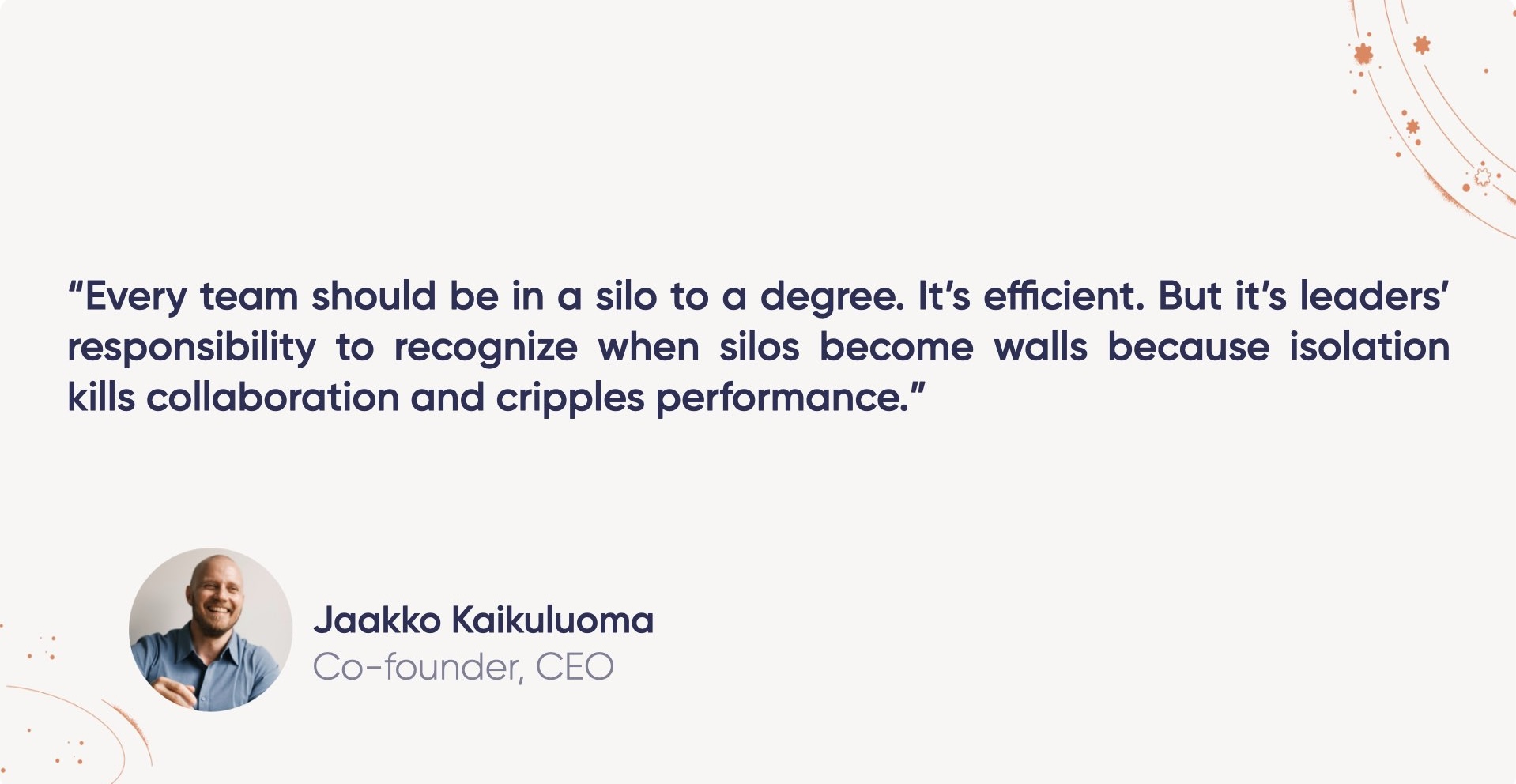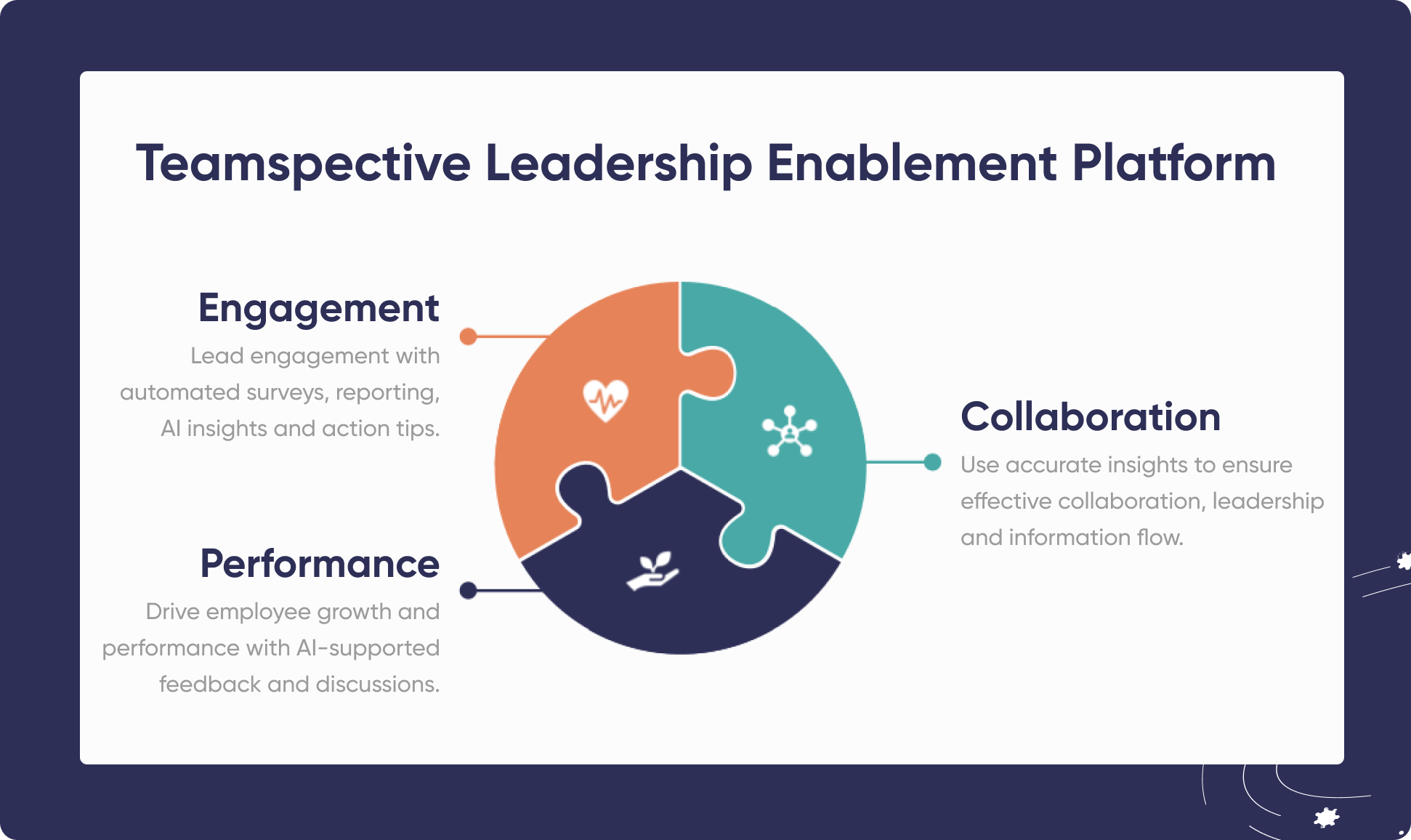Knowledge Silos in the Workplace: Break Down Information Barriers for Better Team Performance
September 15, 2025Here’s an organizational nightmare. Your engineering department has been updating SharePoint dutifully, only to find out that the entire organization had migrated to Google Workspace 6 months prior. This is knowledge silos in action. And it's costing you millions.
Here’s an organizational nightmare. Your engineering department has been updating SharePoint dutifully, only to find out that the entire organization had migrated to Google Workspace 6 months prior.
This is knowledge silos in action. And it’s costing you millions.
While not all knowledge silos are detrimental to your performance, you need to know when and how to break them.
What Are Knowledge Silos?
Knowledge silos happen when information, expertise, or insights stay trapped within specific teams, departments, or individuals. Think of them as invisible walls that prevent knowledge from flowing freely across your organization.
It’s important to note that not all knowledge silos are problematic. Sometimes, having specialized knowledge concentrated in specific teams actually helps performance. For example:
- Security teams need to keep certain information restricted
- Legal departments must maintain confidentiality around sensitive matters
- R&D teams often work better when they can focus deeply without constant interruptions
I’ve seen organizations where well-managed knowledge silos actually improve efficiency. Teams can dive deep into complex problems without being pulled in different directions. The key is making sure these silos are intentional, not accidental.

When Do Knowledge Silos Become Problematic?
Knowledge silos become dangerous when they block critical information flow or create organizational blind spots. Here are the warning signs I watch for:
Cross-Team Dependencies Break Down
When Team A needs information from Team B to complete their work, but that knowledge stays locked away, projects stall. I’ve seen product launches delayed by months because engineering insights never reached the marketing team.
Duplicate Efforts Multiply
Teams waste time solving problems that others have already tackled. Without knowledge sharing, your organization keeps reinventing the wheel.
Decision-Making Suffers
Leaders make choices based on incomplete information. When knowledge stays trapped in departmental bubbles, strategic decisions often miss critical insights.
Innovation Stagnates
The best innovations often happen when ideas from different areas combine. Knowledge silos prevent these creative collisions.
Employee Frustration Grows
People get frustrated when they can’t access the information they need to do their job well. This leads to decreased engagement and higher turnover.
Discover Your Hidden Networks
Understand how work really gets done and who are the key influences in your organization.
How to Break Knowledge Silos in Your Organization
Based on my work with hundreds of leaders, here’s what actually works to break down harmful knowledge silos:
1. Map Your Knowledge Networks First
Before you can fix knowledge flow problems, you need to see them clearly. I use Organizational Network Analysis (ONA) to understand how information actually moves through organizations.
ONA reveals:
- Who holds critical knowledge
- Where information bottlenecks exist
- Which teams are isolated from the rest of the organization
- How knowledge flows (or doesn’t) between departments
2. Create Structured Knowledge Sharing
Set up regular cross-functional meetings where teams share insights and challenges. Make these sessions focused and time-boxed to respect everyone’s schedule.
3. Identify and Develop Knowledge Brokers
Some people naturally connect different parts of your organization. Identify these knowledge brokers and give them time and resources to facilitate information sharing.
4. Use Technology Thoughtfully
The right platform can help knowledge flow more easily. But remember - technology alone won’t solve silo problems. You need the right culture and processes too.
5. Reward Collaborative Behavior
Make knowledge sharing part of performance reviews. Recognize and celebrate employees who help information flow across team boundaries.

How Organizational Network Analysis Can Help
ONA gives you data-driven insights into how knowledge actually moves through your organization. Here’s what I’ve learned from analyzing collaboration patterns:
Identify Hidden Knowledge Hubs
ONA shows you who really holds important knowledge, not just who’s supposed to have it according to the org chart. Often, the most valuable insights come from unexpected sources.
Spot Isolation Risks
Some teams become accidentally isolated from the rest of the organization. ONA helps you find these groups before they become problematic silos.
Find Natural Collaboration Patterns
People naturally collaborate in certain ways. ONA reveals these patterns so you can work with them instead of against them.
Measure Progress Over Time
You can track how knowledge sharing improves as you implement changes. This gives you concrete data to show leadership that your efforts are working.
When combining ONA insights with performance management data and feedback surveys, leaders get a complete picture of how knowledge flows impact their team’s success. This combination helps them act quickly when they spot problems.

For example, at Teamspective, we help leaders use these combined insights to:
- Have better one-on-one conversations with team members
- Identify collaboration gaps before they become critical
- Support employees who might be overwhelmed or isolated
- Build stronger connections between teams
The Benefits of Breaking Knowledge Silos
When you successfully manage knowledge silos, the results speak for themselves. The data shows significant returns on investment:
Faster Problem-Solving
Teams can tap into expertise from across the organization. McKinsey found that the average worker spends nearly 20% of their workweek tracking down information, but breaking down silos cuts this time dramatically. Problems that used to take weeks to solve get resolved in days.
Massive Productivity Gains
According to the same research, sharing knowledge improves productivity by 35%. Even more striking, some studies show that 90% of the time employees spend creating new reports or products is spent duplicating information that already exists elsewhere in the business.
Better Innovation
Ideas combine in new ways when knowledge flows freely. Organizations practicing continuous improvement through knowledge sharing tend to see an improvement in productivity.
Improved Employee Engagement
People feel more connected to the broader organization. They see how their work contributes to bigger goals. Highly engaged employees return 120% of their salary in value to the organization.
Significant Cost Savings
The financial impact is substantial. Knowledge silos can cost companies between $2.4 million to $240 million annually in lost productivity, depending on the organization’s size and industry. When employees don’t need to waste time on searching or - worse - recreating the same documents, they naturally become more productive.
Knowledge Retention
Critical knowledge doesn’t stay trapped with single individuals. When someone leaves, their insights don’t disappear with them.
Conclusion
Knowledge silos aren’t inherently good or bad. They’re tools that need to be managed thoughtfully. The goal isn’t to eliminate all silos, but to ensure knowledge flows where it needs to go.
Remember, breaking knowledge silos is about more than just technology or processes. It requires building a culture where people want to share what they know. When you combine the right insights, tools, and leadership support, you can create an organization where knowledge flows naturally to where it creates the most value.
As a leader, your job is to be intentional about knowledge flow in your organization. Ready to see how your knowledge flows? Book a demo today to discover how you can turn knowledge sharing into your competitive advantage.



